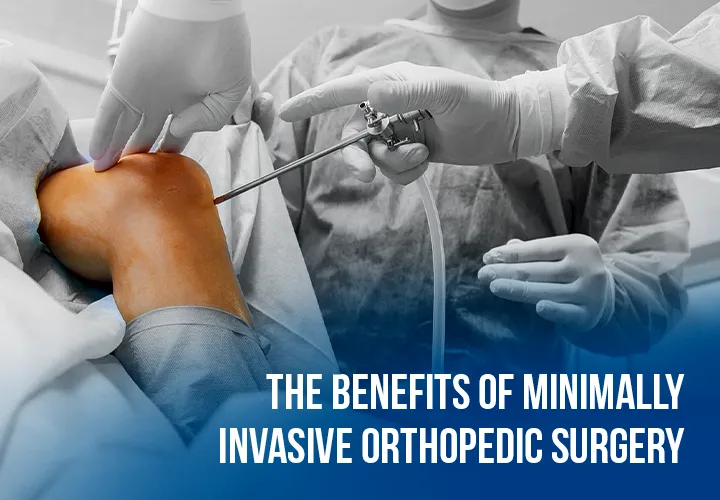Since its inception in the 1980s, Minimally Invasive Surgery (MIS) has undergone numerous improvements and advancements. The motto behind every orthopedic surgery is to help patients heal faster and regain their active lifestyle, and this is where MIS has become quite popular recently. There are many reasons why surgeons prefer to use MIS. In this blog, let us dive into the details of MIS and its top advantages.
What is Minimally Invasive Orthopaedic Surgery?
Minimally invasive surgery (MIS) is an advanced surgical procedure that minimizes skin cuts and holes. Our orthopedic surgeons make small incisions to operate on patients, reducing the risk of complications and damage to surrounding muscles.
While large cuts are made in open surgeries to visualize the treatment area, doctors make a small cut in MIS to insert cameras and see the area they are operating in. This procedure is safer and faster than the traditional ones and offers the following benefits to the patients:
Smaller Incisions
As mentioned above, surgeons make a smaller cut (unlike the traditional one) to insert the cameras and other surgical tools. These fibre-optic cameras allow the surgeons to see the affected area before operating.
Reduced Risk of Infection
A smaller cut means a reduced risk of infection from outside germs and bacteria.
Shorter Hospital Stay
As the cut is small, the length of hospital stay is shorter as compared to open surgeries. This also brings down the hospital charges and hence, is more cost-effective.
In addition to the previously mentioned benefits, there are several advantages of minimally invasive surgery. These include reduced trauma to the body, decreased blood loss during surgery, and a lower risk of surgical complications. Patients often experience less postoperative pain and require less pain medication. Furthermore, minimally invasive procedures may not require general anaesthesia, making them a viable option for individuals who may not tolerate it well.
Faster Recovery
At the best ortho hospital in Nagercoil, patients who undergo MIS experience less postoperative pain and discomfort. They report a speedy recovery and a smooth return to their normal routine after surgery.
Types of Minimally Invasive Surgeries
Following are the major types of minimally invasive advised by our orthopedic surgeons:
Keyhole Surgery
Our surgeons use small ‘keyhole’ incisions to make places for instruments. These incisions are usually half-inch long or less, depending on the location.
Robotic Surgery
This is an advanced form of MIS that uses robotic arms to operate. A specially trained surgeon operates with a robotic arm within the OT, and robotic surgery offers greater precision and accuracy than other MIS.
Endovascular Surgery
Here, a tiny catheter is inserted into the blood vessels that help pass surgical instruments for operation.
Endoscopic Surgery
Here, the surgeon passes endoscopes through an existing opening in the body like nose and mouth, then operates through these endoscopes.
Some Examples of MIS procedures
Below given are some of the instances where our surgeons use MIS:
- Urological surgery
- Arthroscopy
- Heart surgery
- Spine surgery
- Laparoscopic surgery
- Endovascular surgery
- Epilepsy surgery
At Ponjesly Hospital, we offer complete orthopedic procedures, including trauma, fractures, and other musculoskeletal surgeries. With the help of minimally invasive surgeries, our experienced surgeons help patients restore joint functions and mobility while ensuring speedy recovery and a shorter hospital stay.


